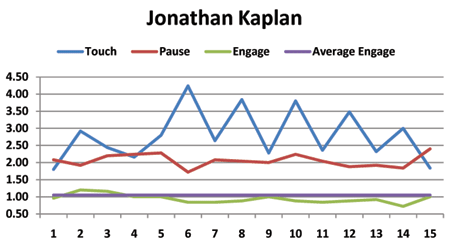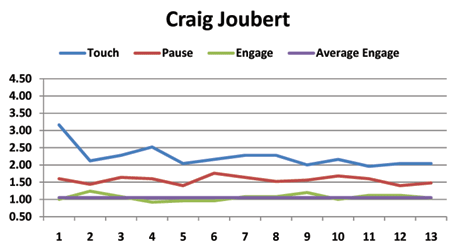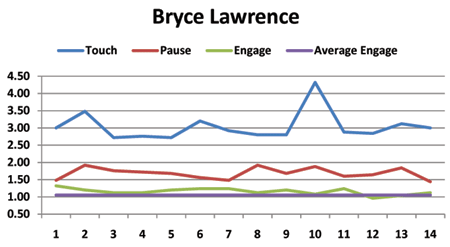I’m not a fan of the current scrum call sequence, particularly how slowly it’s being called in 2011.
One of the common complaints about the calling sequence is that there is so much variation from scrum to scrum and from referee to referee. To see how accurate this complaint is I decided to look at three games from the 2011 Super Rugby competition that were controlled by referees who’ve now been announced on the 2011 RWC panel — Craig Joubert, Jonathon Kaplan and Bryce Lawrence.
If there’s one job I wouldn’t want in rugby, it would be refereeing; there is so much criticism, and very little recognition when they have a good game. However, if there is a problem with inconsistency, I’d rather point it out constructively.
I reviewed all the calls for scrums where the call sequence was completed in the following games:
-
Round 2 – Rebels v. Brumbies – Jonathan Kaplan – 15 scrums;
-
Round 7 – Force v. Rebels – Craig Joubert – 13 scrums;
-
Round 9 – Reds v. Bulls – Bryce Lawrence – 14 scrums.
To measure the timing of the scrum call sequence, I analysed the audio frame by frame (at the rate of 25 frames per second) and noted the moment each part of the call sequence (crouch, touch, pause, engage) started. This data provided a time period between each command, and from there I’ve tracked the time lapse for three periods:
-
from the beginning of the crouch call to the beginning of the touch call;
-
from the beginning of the touch call to the beginning of the pause call; and
-
from the beginning of the pause call to the beginning of the engage call.
There is variation between many of the calls — such as from crouch to touch, and from touch to pause — because the referee often waits for the packs to actually crouch into position, and then to touch, before he’s prepared to proceed.
The area of the call that I believe causes the main problem with scrums is the gap between the pause and engage calls. If that gap is too long the packs often come together early, and if it varies too much it makes the hit a bit of a lottery.
I expected to find a fair bit of variation in this timing from scrum to scrum and from ref to ref. However, that didn’t turn out to be the case for the scrums I reviewed. The graphs for each referee are shown below (the horizontal axis is the number of scrums and the vertical axis is the seconds (or part thereof) between the start of each call).
When you look at the variation between the average engage time across all three games (the purple line) they’re pretty minor. I must admit that I was surprised about the level of consistency, and I don’t think you could expect much better unless you had a machine calling the sequence.
Now I know that you could probably go through other scrums and find greater inconsistency, but there are only so many hours in the day. And on the basis of the data from these three games, I say congratulations to the referees concerned.




